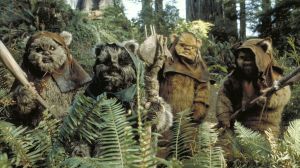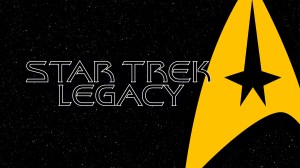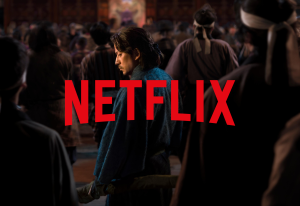
Reflecting upon The Other History of the DC Universe #1, I’m torn between two distinct conversations: one about craft and another about purpose. It is a technically accomplished project addressing difficult subject matter, and each half of that equation merits thorough consideration. The first of five issues lays out the series premise—an examination of DC Comics’ fictional history through the perspectives of prominent superheroes of color—telling the story of Jefferson Pierce (a.k.a. Black Lightning) from 1972 through 1995 as it merges American history with familiar beats from DC Comics. The end result is an enjoyable read filled with engaging compositions and skillful prose, but its success in addressing racist ideas and systems embedded in DC Comics’ history is less clear.
Videos by ComicBook.com
The Other History of the DC Universe is presented as illustrated prose with Black Lightning detailing his life story as images frame and enhance his written words. Writer John Ridley excels in this often challenging format and avoids the pitfalls of past experiments like Batman #663. This will prove to be no surprise for readers familiar with the novelist and Academy Award-winning writer’s career, and his work here is sufficient to attract interest in further reading without images. He quickly establishes Pierce’s voice and develops his story at a natural pace filled with asides and memorable details. It’s not difficult to imagine this monologue overlaying a documentary-style collection of clips, developing a complete narrative that reads as excellent non-fiction.
There is no clip reel to accompany Ridley’s words, however, and the layouts and finishes provided by Giuseppe Camuncoli and Andrea Cucchi, respectively, are critical in making more than 40 pages both accessible and engaging. Camuncoli delivers career-best work in these compositions. Each page delivers a unique perspective and supplements the narration with added depth. Camuncoli borrows regularly from DC Comics’ most iconic moments and emphasizes familiar symbols and silhouettes, all of which develop a tone of objective authority in presenting this narrative.
Cucchi’s finishes file away the rough edges of Camuncoli’s inks and excessive lines that hinder projects like Undiscovered Country. Cleanly defined forms enhance these compositions considerably. A splash of Superman looming with power provides the figure with depth and some grit, but still rests comfortably alongside the clean layouts and geometric forms on other pages.
Even as a comics reader who is typically disdainful of the illustrated prose approach to comics, The Other History of the DC Universe makes for compelling reading. All of the creators are well-suited to their roles and enhance one another’s work. As an autobiography of Black Lightning, this debut issue offers an engaging yarn with many memorable pages.
The Other History of the DC Universe #1 does not seek simply to entertain, however. It’s clear from the issue’s presentation of both the realities of American history and threads from past DC comics that it is presenting a statement on the relationship between race and American superhero comics. It is here that the story becomes much more interesting, but the results less clear.
Ridley addresses the many expectations and stereotypes found in the canonical character of Jefferson Pierce and strives to make them a recognizably human character, succeeding to a surprising degree. Extreme narratives of exceptionalism (becoming a record-breaking Olympic athlete), urban decay (losing a father to gang violence), and tokenism (refusing the Justice League’s invitation) may originally have been imposed on the character by white creators with a very limited understanding of the character they were writing. Yet here Ridley uses those stereotypes to walk through an era of American politics and reflect on the stereotypes utilized by white Americans to understand people still segregated in separate neighborhoods and schools. Pierce’s voice rages against the injustice, but with the messiness of real rage. In spite of all his accomplishments, Ridley finds space for questionable choices, uncertain outcomes, and imperfection. In rewriting Black Lightning’s history, Ridely adds a much-needed layer of nuance.
That story’s intersection with its titular subject is where the addition becomes less clear in my perspective. In retelling the most common elements of Black Lightning’s story, The Other History of the DC Universe both points out the imaginary nature of DC history and ignores the source of racist ideas in that canon.
Black Lightning’s story here is another imaginary story like all of them that came before it. In this instance, the comic is critiquing the past and it benefits in maintaining the most familiar touchstones from Black Lightning’s history. At the same time it calls into question why so many of these narratives and designs remain dominant in DC’s publishing line. While the current publishing line reflects growing diversity, its leading characters and prioritization of canon maintains problems created decades ago. The Other History of the DC Universe #1 reminds readers that much of the history being questioned here is reaffirmed in new issues each Tuesday.
This topic also reminds readers that people created this history and beyond critiques of past comics there must be a critique of the men (because comics is still overwhelmingly staffed by men) and systems that created them. The lack of diversity in DC Comics’ products is not the result of an imaginary, unalterable history; it is a reflection of the people who staff the company and wield the power to decide what history and whose stories will be presented. Even as the publisher increases the diversity of characters in its comics, there remain grave concerns about who is allowed to control their stories in the office. It may not be possible for The History of the DC Universe to ask this question, but given its focus that question also seems to be the most important one to ask.
I can’t fault The Other History of the DC Universe for not providing an equitable canon of DC Comics or pointing to systemic racism in the back office. These are systemic problems that cannot be addressed in a single comic book. Yet as it points to the flaws in DC Comics’ past, the comic cannot help but evoke these issues. In skillfully telling its story and providing serious consideration of DC’s past, it evokes critical questions about the publisher’s future—one which still must be imagined.
Published by DC Comics
On November 24, 2020
Written by John Ridley
Art by Giuseppe Camuncoli and Andrea Cucchi
Colors by Jose Villarrubia
Letters by Steve Wands
Cover by Giuseppe Camuncoli and Marco Mastrazzo








